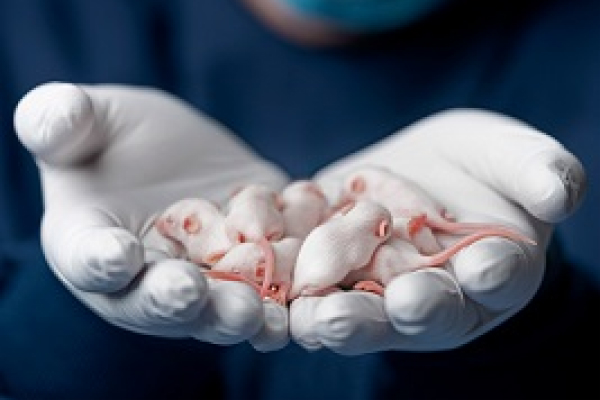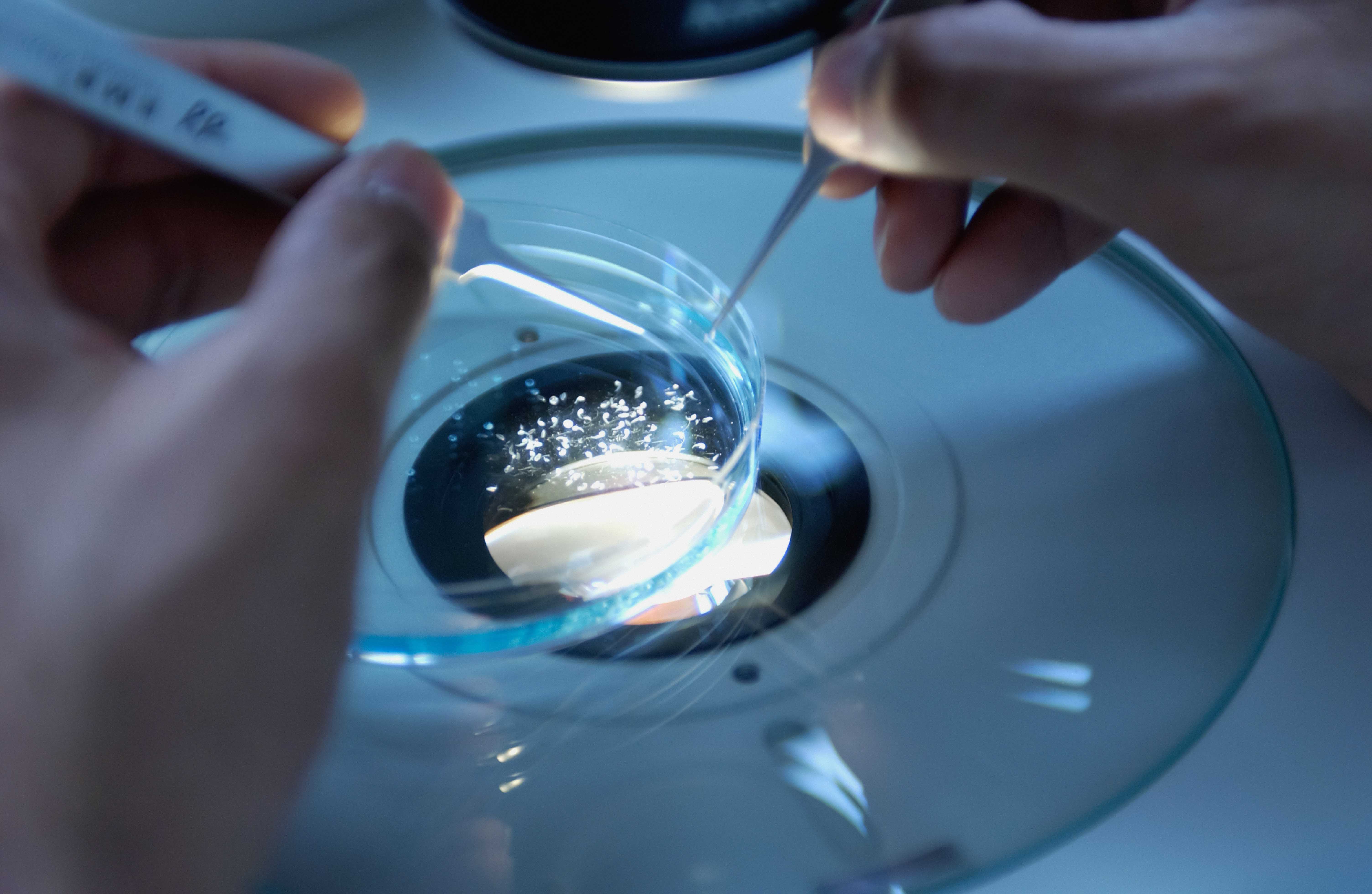Genetically engineered mouse and rat models can be broadly grouped into three categories: Gene knockouts, knock-ins, and transgenics. The intent of a knockout model is to generate an animal with a loss-of-function (null) allele. Knockout strategies can further be subcategorized as a constitutive knockout strategy that inactivates the gene of interest in all cells and tissues permanently throughout development, and a conditional knockout strategy that allows for tissue- and/or stage-specific inactivation.
Knockout Mice

Knockout Overview
Depending on the model design, knockout models may be used to validate therapeutic compounds during drug discovery, explore cellular processes, gain insights into disease pathogenesis and prevention, and more.
At Taconic, typically, we generate constitutive knockout mouse or rat models using CRISPR/Cas9 technology in embryos and conditional knockout mouse models using homologous recombination (HR) in embryonic stem cells (ESCs). CRISPR/Cas9 methodology is well suited for generating precise deletions within the genome. Currently, HR in ESCs is better suited for generating conditional knockout alleles because it allows for extensive molecular characterization early on in the project, guaranteeing that both loxP sites are correctly integrated on the same chromosome.
Conditional knockout alleles are quite versatile — depending on the expression pattern of the Cre line used for crossbreeding, either a constitutive knockout, a tissue-specific conditional knockout, or an inducible conditional knockout can be obtained as outlined in the figure below.

- Constitutive Knockouts
- Conditional Knockouts
Constitutive Knockouts
This strategy is used to generate a mouse or rat model where your gene of interest has been permanently inactivated in all cell types throughout development. Because we typically utilize a CRISPR/Cas9 strategy to generate this type of allele, heterozygous F1 mutant animals are delivered in approximately twenty-four weeks.
Overview of the Taconic CRISPR/Cas9-mediated constitutive knockout workflow
- Development of a model generation strategy
- Injection of gRNA and Cas9 reagents into mouse or rat zygotes
- Genotyping and target-site sequence analysis in mutated candidate F0 animals
- Generation of F1 mice heterozygous for the knockout allele
- Standard deliverable: 3 to 5 F1 heterozygous mice or rats
- Optional ExpressMODEL® deliverable: 20+ F1 heterozygous mice
- Molecular characterization of F1 heterozygous mice or rats

In this example, two guide RNAs (gRNAs) are used to direct Cas9 protein to specific sites within introns 1 and 6 of the wild type gene to generate double-strand breaks (scissors). This strategy generates a deletion within the body of the gene that includes exons 2 to 6. This deletion is predicted to result in a loss-of-function by deleting a large part of the coding region and critical functional domains. In addition, the deletion generates a frameshift from exon 1 to exon 7 which introduces a premature STOP codon in exon 7. Thus, the resulting transcript is predicted to be degraded by the nonsense-mediated RNA decay pathway.
Conditional Knockouts
This strategy is used to generate a tissue- and/or stage-specific deletion of your gene of interest. Moreover, a constitutive knockout can by generated by crossing the conditional knockout line to a strain expressing a Cre allele in the germline. Because we typically utilize an ESC-mediated strategy to generate this type of allele, heterozygous F1 mutant animals are delivered in approximately forty-six weeks.
Overview of the Taconic ESC-Mediated Conditional Knockout Workflow
- Development of a model generation strategy
- Targeting vector construction and DNA sequence validation
- Transfection of targeting vector into ESCs
- Isolation of targeted ESC clones and molecular validation by extensive
radioactive Southern blot analysis using multiple external and internal probes and multiple restriction enzymes - Removal of selection cassette(s) by in vitro deletion
- Injection of validated ESC clones into mouse blastocyst-stage embryos
- Generation and molecular characterization of F0 founder chimeras
- Generation of F1 mice heterozygous for the knockout allele
- Standard deliverable: 3 to 5 F1 heterozygous mice
- Optional ExpressMODEL® deliverable: 20+ F1 heterozygous mice
- Molecular characterization of F1 heterozygous mice

In this example, loxP (Cre recombinase recognition) sites are inserted flanking exon 4 of the wild type gene. A puromycin drug resistance cassette is used to enrich for correctly targeted ES cell clones and this cassette is removed afterwards in the presence of Flp recombinase. Following Cre recombinase activity, the targeted exon is removed. Deletion of exon 4 is predicted to result in a loss-of-function of the target gene by generating a frameshift from exon 3 to exons 5-21 which introduces a premature STOP codon in exon 5. In addition, the resulting transcript is predicted to be degraded by the nonsense-mediated RNA decay pathway.
What our customers say:
“Our collaboration with Taconic was the first time we outsourced conditional knockout production and have been favorably impressed. Taconic's communication from construct design, to validation of the recombination in ES cells, through to the breeding of chimeras and excision of the selection cassette was of exceptional quality and the fact that Taconic uses Southern blotting to interrogate the targeted loci in the ES cells gave us confidence in progressing to the production of chimeras and breeding. Having discovered the joys of outsourcing, I would think hard before trying to make a conditional allele in my lab again.”
David Ron, MD, Professor of Cellular Pathophysiology and Clinical Biochemistry at a major research institution
Featured Resources
Get In Touch
Book a complimentary consultation or get support for an existing order
If you need immediate assistance, please contact Customer Service:
Taconic Corporate Offices
Email: info@taconic.com
Phone: +1 (518) 697-3900
273 Hover Ave., Germantown, NY 12526
North American Customer Service
Email: info@taconic.com
Phone: +1 (518) 697-3915
Toll-free: +1 (888) 822-6642
Hours: (Monday - Friday): 7 a.m. - 6 p.m. ET
European Customer Service
Email: info@taconic.com
Phone (Europe and Denmark): +45 70 23 04 05
Phone (Germany): +49 214 50 68 023
Hours: (Monday - Friday): 7 a.m. - 5 p.m. CET
How can we help you?
Fill out the form to connect with us:
Welcome! Tell us a little about yourself






.jpg)

.jpg)
.jpg)
.jpg)
.jpg)





.jpg)
.jpg)


.jpg)



.jpg)




.jpg)

.jpg)
.jpg)







